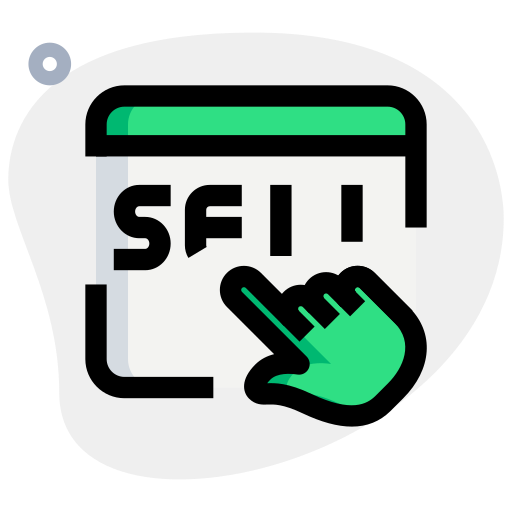
Refinance your Car Loan
Refinance your car loan to get a lower interest rate and lower payment.

Mortgage Referrals
With over 30 lenders in Canada, get referred for the right mortgage.
Personal Loan Scams in Canada and How to Avoid Them.
Introduction:
Personal loans play a crucial role in the financial landscape of Canada, providing individuals with the means to address various needs such as home renovations, debt consolidation, or unexpected medical expenses. However, the landscape is not without its pitfalls, as scams targeting consumers seeking personal loans continue to proliferate. This comprehensive guide aims to shed light on the personal loan market in Canada, the potential scams consumers need to be wary of, and practical tips to stay safe while applying for and searching for personal loans. Additionally, we will explore alternative financial solutions and delve into relevant statistics about Canadians and their finances.
I. The Canadian Personal Loan Landscape:
1.1 Overview of the Personal Loan Market:
The personal loan market in Canada is robust, with a plethora of financial institutions, banks, and online lenders offering diverse products to meet the varying needs of consumers. Traditional banks like RBC, TD, and Scotiabank compete with alternative lenders such as Borrowell, Fairstone, and Mogo, creating a dynamic and competitive environment.
1.2 Types of Personal Loans:
Personal loans in Canada come in various forms, including secured and unsecured loans. Secured loans require collateral, often in the form of assets like a home or car, while unsecured loans do not. The interest rates and terms vary depending on the type of loan and the borrower's creditworthiness.
II. Recognizing and Avoiding Personal Loan Scams:
2.1 Common Personal Loan Scams:
Despite the legitimacy of many lenders, scams targeting individuals seeking personal loans persist. Some prevalent scams include upfront fee scams, identity theft, and phantom debt collection. Understanding these scams is crucial for consumers to protect themselves.
2.2 Upfront Fee Scams:
Upfront fee scams involve fraudulent lenders requesting payment before disbursing the loan. Legitimate lenders typically deduct fees from the loan amount, and charging upfront fees is a red flag.
2.3 Identity Theft:
Scammers may pose as legitimate lenders, tricking individuals into providing personal information. This information can be misused for identity theft, leading to severe financial and personal consequences.
2.4 Phantom Debt Collection:
Scammers may attempt to collect non-existent debts, creating a sense of urgency and pressuring individuals to make payments. Consumers should verify the legitimacy of debt collection agencies and debts before taking any action.
III. Tips for Safely Applying for Personal Loans:
3.1 Research and Due Diligence:
Before applying for a personal loan, consumers should thoroughly research and verify the legitimacy of the lender. Checking reviews, testimonials, and the lender's credentials can provide valuable insights.
3.2 Review Terms and Conditions:
Carefully review the terms and conditions of the loan agreement. Pay attention to interest rates, fees, repayment terms, and any hidden charges. Legitimate lenders provide transparent and clear information.
3.3 Check for Licensing:
Ensure that the lender is licensed to operate in the province or territory where you reside. Licensing requirements vary across Canada, and legitimate lenders comply with regulatory standards.
3.4 Beware of Unsolicited Offers:
Be cautious of unsolicited loan offers, especially if they come via email, phone calls, or text messages. Legitimate lenders do not typically reach out in this manner.
3.5 Secure Website and Communication:
When submitting personal information online, ensure that the website is secure (https://) and uses encryption to protect sensitive data. Avoid sharing personal information through unsecured channels.
IV. Alternatives to Traditional Personal Loans:
4.1 Government Assistance Programs:
Depending on the nature of the financial need, individuals may explore government assistance programs designed to provide support in specific circumstances, such as home renovations or education.
4.2 Credit Unions:
Credit unions often offer more personalized services and competitive rates compared to traditional banks. They may be a viable alternative for individuals seeking loans with favorable terms.
4.3 Peer-to-Peer Lending:
Peer-to-peer lending platforms connect borrowers with individual investors, bypassing traditional financial institutions. These platforms may offer more flexible terms and lower interest rates.
4.4 Savings and Emergency Funds:
Building and maintaining a savings account or emergency fund can mitigate the need for external borrowing. Having a financial safety net can provide a buffer during unexpected expenses.
V. Statistics about Canadians and Finances:
5.1 Household Debt:
Canada has faced challenges with high levels of household debt in recent years. Understanding the current debt landscape is essential for individuals contemplating personal loans.
5.2 Credit Scores:
A significant number of Canadians may have suboptimal credit scores, impacting their ability to secure favorable loan terms. Awareness of one's credit score and taking steps to improve it can enhance financial prospects.
5.3 Financial Literacy:
Statistics on financial literacy in Canada highlight the importance of education and awareness. Improving financial literacy can empower individuals to make informed decisions about personal loans and other financial matters.
Conclusion:
In navigating the world of personal loans in Canada, consumers must be vigilant to protect themselves from potential scams and make informed choices. Thorough research, cautious evaluation of loan terms, and exploring alternative financial solutions can contribute to a safer borrowing experience. Understanding the financial landscape, including relevant statistics, enables individuals to take proactive steps toward financial well-being in a responsible and informed manner.



